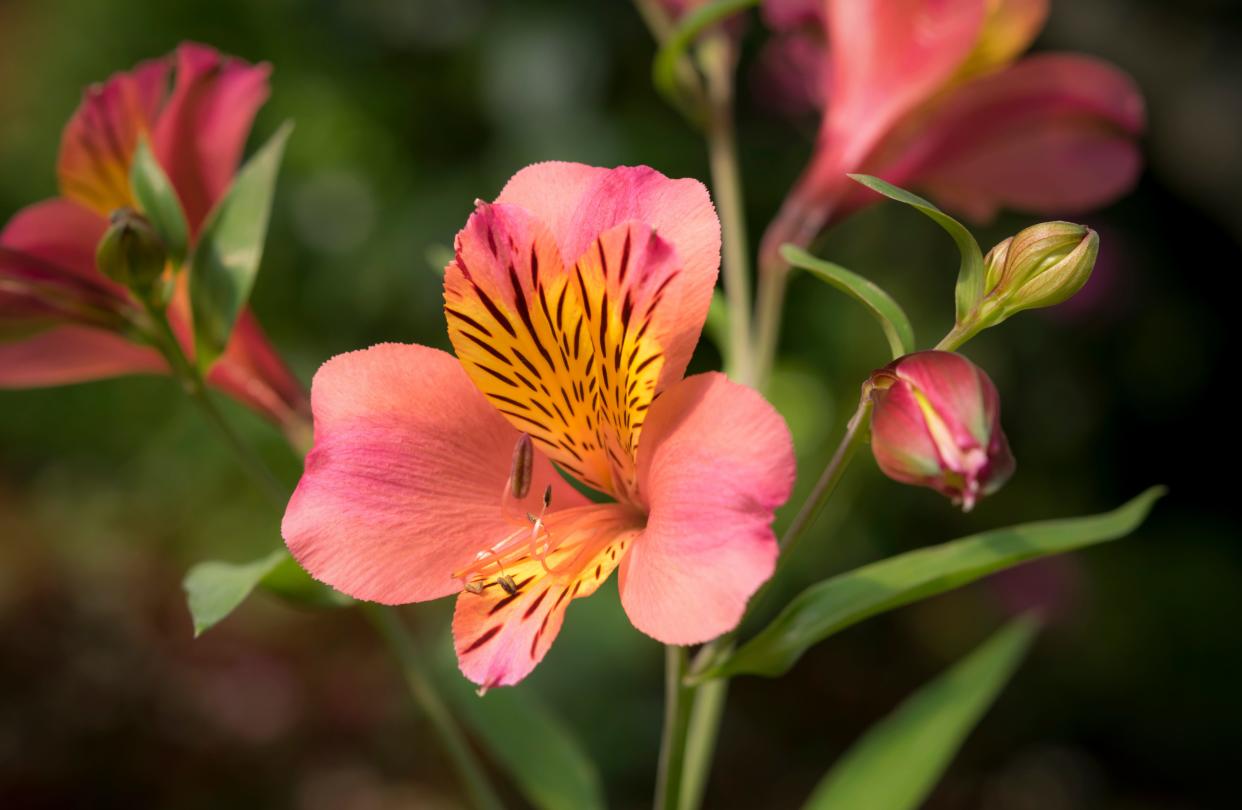CHARLES REYNOLDS: Parrot lilies are lovely but weedy

If you’ve seen a commercial mixed-flower bouquet lately, it most certainly included a parrot lily or two. Also known as Peruvian lily and lily of the Incas, the plants — Alstroemeria hybrids — aren’t related to true lilies, but they flaunt beautifully variegated, lily-like flowers in the warm season. Indeed, Alstroemeria hybrids are standard items for the cut-flower industry in South America, where 50 native species grow at high altitudes.
Despite their striking blossoms in shades of orange, pink, white, red and purple, hybrid parrot lilies aren’t popular with Florida gardeners because they’re seasonally dormant, dying to the ground in winter but vigorously self-seeding in summer. Some species — including Alstroemeria psittacina, A. caryophyllaea and A. aurea — are more at home in our climate than most hybrids. Provide mulched, moderately enriched sites in dappled light, and propagate by seeds and divisions in early spring. Plants, seeds and so-called bulbs are available online.
PALMS AS PERENNIALS?
You don’t have to be observant to notice that many of our palms have been stricken by disease: dead and dying cabbage palms, as well as Canary Island, sylvester and edible date palms are everywhere, victims of lethal bronzing. In addition, Washingtonia palms — capable of growing 80 feet tall — are perishing in great numbers from a fungal malady.
At first glance it seems unwise to install any of those species, but the situation warrants a second look. Since most of those palms — with the exception of Washingtonias — grow slowly and look attractive at all stages of life, why not use them as if they were Florida perennials? By that I mean there would be a range of 10 to 15 years before they’re likely to be attacked by disease, and the cost to remove them would be minimal. They’d play a nontraditional but valuable role in our landscapes.
WORLD'S MOST GRACEFUL FAN PALM
Though often statuesque, most fan-leaved palms aren’t quite as graceful as feather-leaved species such as foxtail and queen palms. A notable exception is ribbon palm, a cold-hardy, disease-resistant, fan-leaved plant from Australia that grows up to 50 feet tall at a moderate rate. A sun-worshipper even in youth, ribbon palm (Livistona decipiens or decora) is a single-trunked species with a thick crown of leaves, though its appearance is anything but dense.
That’s because its leaves — up to 9 feet wide — are deeply divided into segments that split into weeping leaflets up to 3 feet long. The effect is magical, especially when viewed against the sky. Lengthy branched inflorescences display thousands of bright-yellow flowers followed by half-inch fruit that ripen to black. Seeds germinate one to two months after sowing. Seeds and plants, which are expensive, are available online.
This article originally appeared on The Ledger: WEEKEND PLANTINGS
